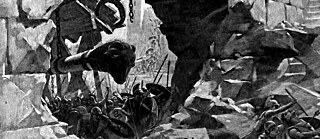Performing Stasis
Forms of Staying Still
Stasis can also be a performative force. But what exactly does stasis mean? Barbara Gronau on performed motionlessness.
Slowness
Stasis in theater can first and foremost mean the slowing, thwarting, or prolonging of events, movements, and progressions. From Anton Chekhov’s Three Sisters (Moscow, 1901) to Samuel Beckett’s Waiting for Godot (Paris, 1953) to Christoph Marthaler’s Murx the European (Berlin, 1993), there are numerous examples in which the time structure of classical drama is consistently subverted and a dramaturgy of slowness, redundancy, and plotlessness is set in place of pace, need for action, and final resolution.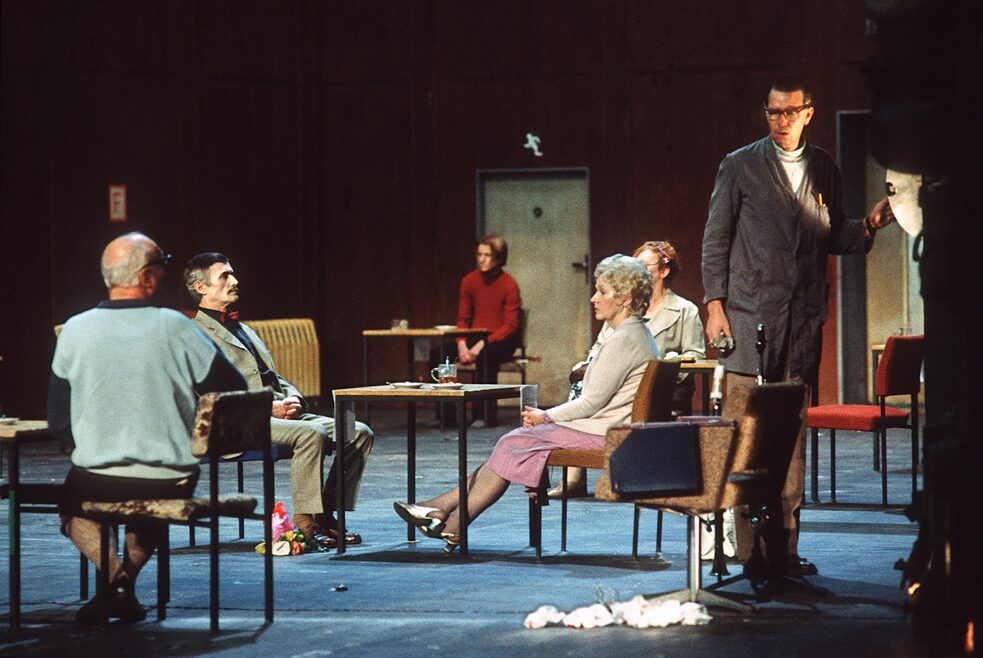 Scene photo from the premiere of Christoph Marthaler’s “Murx the European” on January 16, 1993
| © David Baltzer
The characters seem trapped in a situation of waiting and exhaust themselves in the repetition of common rituals. The performances of these texts regularly elicited emotional reactions ranging from tears to bursts of laughter among the audience, the basis for which cannot be attributed solely to the acting style of the respective performers but also to the dissolution of the concepts of time themselves. It is less a matter of simply being bored than of intensifying the perception of time, space, and situation. These productions can certainly lead to liminal experiences of our modern sense of time.
Scene photo from the premiere of Christoph Marthaler’s “Murx the European” on January 16, 1993
| © David Baltzer
The characters seem trapped in a situation of waiting and exhaust themselves in the repetition of common rituals. The performances of these texts regularly elicited emotional reactions ranging from tears to bursts of laughter among the audience, the basis for which cannot be attributed solely to the acting style of the respective performers but also to the dissolution of the concepts of time themselves. It is less a matter of simply being bored than of intensifying the perception of time, space, and situation. These productions can certainly lead to liminal experiences of our modern sense of time.Posing
In addition, performing stasis can also mean the halting of physical movement or the sustaining of certain positions. From the tableaux vivants of the 18th century, in which costumed actors reenacted works of fine art by posing in front of an audience, to the living sculptures of today’s art world, there are numerous examples in which the deliberate stilling of human bodies is staged as an overlay of spatial and time-based art.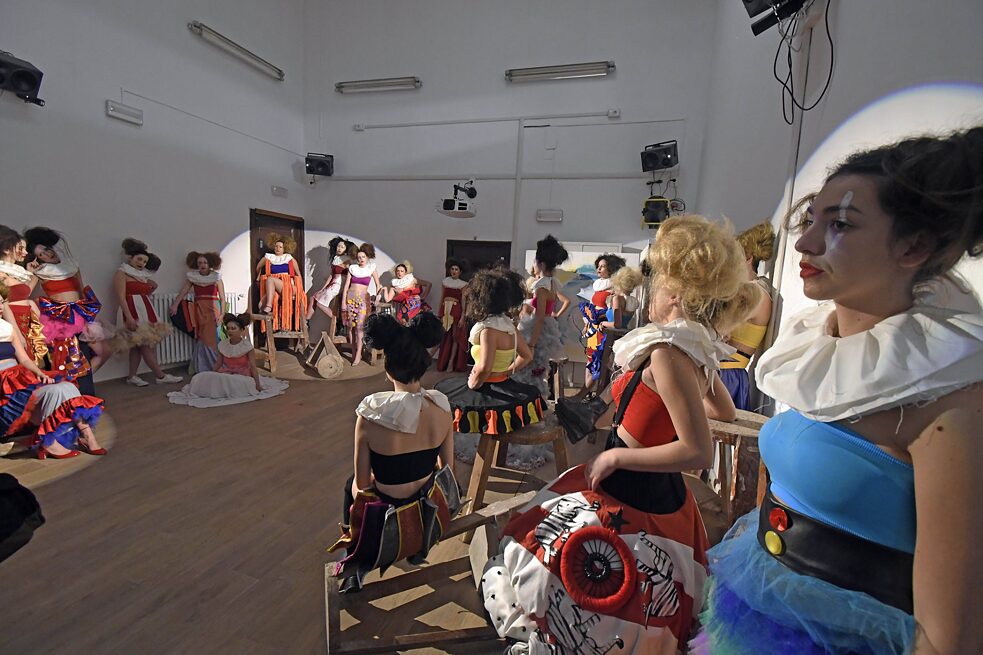 Performance and tableau vivant for Altaroma 2020 fashion week by the students of fashion design at the Accademia di Belle Arti in Rome, Italy, on January 1, 2020
| © picture alliance / Photoshot
Performance and tableau vivant for Altaroma 2020 fashion week by the students of fashion design at the Accademia di Belle Arti in Rome, Italy, on January 1, 2020
| © picture alliance / Photoshot
In this same manner, Timm Ulrichs staged himself in a glass cube as Erstes lebendes Kunstwerk (First living artwork) in 1961; the artist duo Gilbert & George have appeared singing in galleries as costumed and doll-like stiff actors since 1969; since 2000, Erwin Wurm has set up so-called One Minute Sculptures in which museum visitors hold certain poses for one minute according to specific instructions; and the artist Vanessa Beecroft stages exposed, motionless female bodies in arrangements between anonymous uniformity and voyeurism. The apparent transformation of a human body into a living sculptural object is not simply one of the physical challenges of so-called endurance art, it is also directed toward the confusion and shifting of traditional genre boundaries.
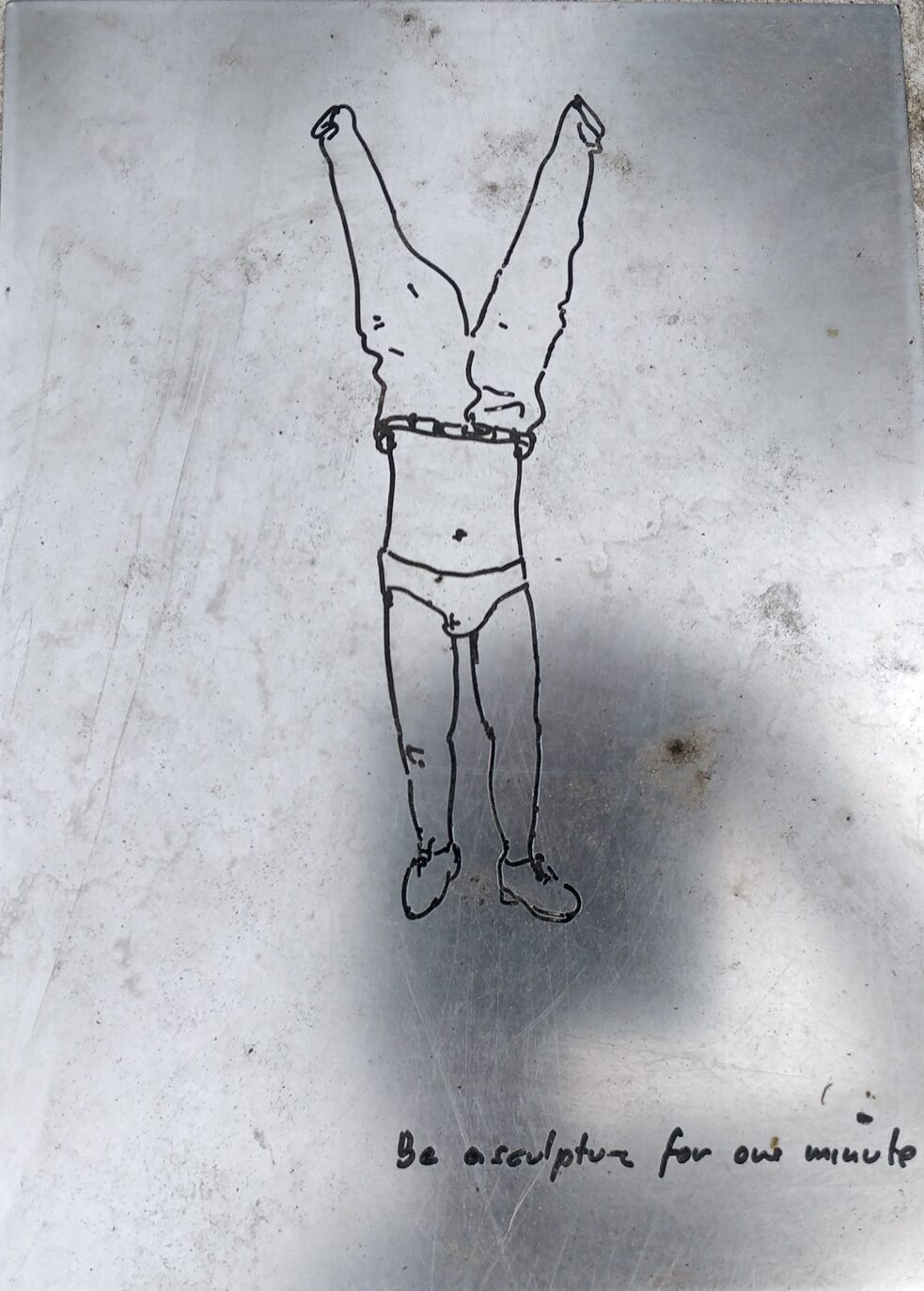 “Be a Sculpture For a Minute,” One Minute Sculpture instructions by Erwin Wurm
| © Funkyxian, CC BY-SA 4.0
“Be a Sculpture For a Minute,” One Minute Sculpture instructions by Erwin Wurm
| © Funkyxian, CC BY-SA 4.0 Stand-in as Resistance
Finally, standing, sitting, or lying still in public spaces can generate a symbolic power that turns a performance into a form of passive resistance. Here, we are reminded of the dancer Erdem Gündüz, who on June 17, 2013, stood in front of a meter-high Atatürk poster in Istanbul’s Taksim Square for eight hours, thereby setting the scene for the internationally known Gezi Park protest movement.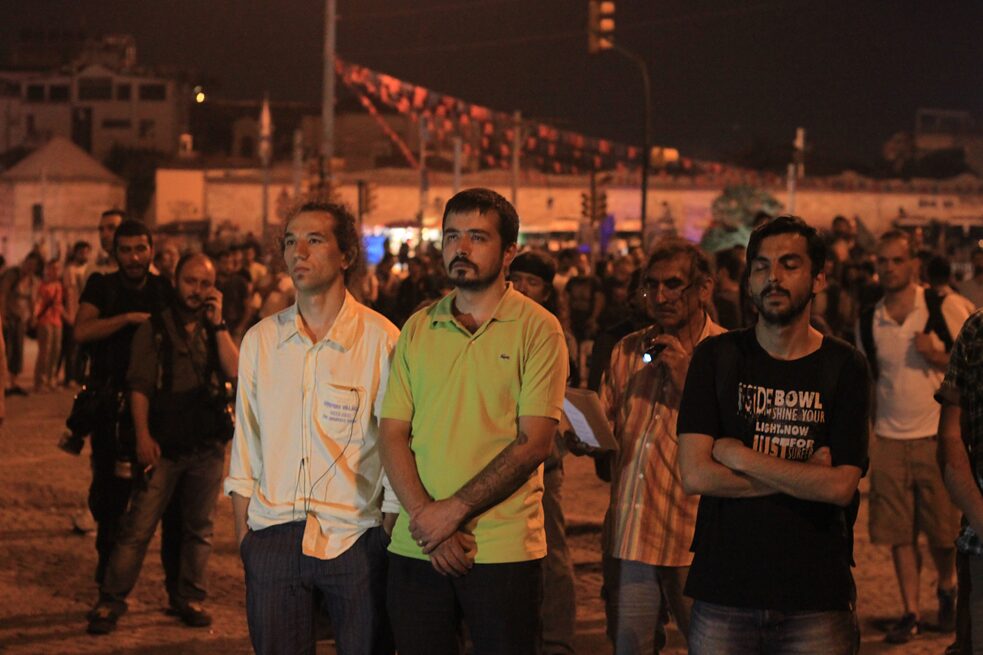 Erdem Gündüz (left in white shirt) in 2013 in Istanbul’s Taksim Square at the start of the Gezi Park protest movement
| © Jwslubbock, CC BY-SA 3.0
Erdem Gündüz (left in white shirt) in 2013 in Istanbul’s Taksim Square at the start of the Gezi Park protest movement
| © Jwslubbock, CC BY-SA 3.0 Stasis as Countertime
With the increasing structuring and control of time in modernity and the orientation of subjects towards acceleration and efficiency, forms of countertime simultaneously arise, which can manifest themselves as forces of persistence in strikes, congestion, delays, a lack of action, exhaustion, or boredom. In the performing arts and performance art, pauses, long durations, and forms of stasis belong to such aesthetic methods. In them, we experience the subject’s limits and crises through the use of long durations, states of exhaustion, and a lack of action. They intensify perception through prolongings, delays, or changes in forms of expression. And finally, they interrupt temporal patterns of order and, thus, create conditions for their reflection, expansion, and critique.This text comes from Barbara Gronau’s publications:
Görling, R., Gronau, B., & Schwarte, L. (2019). Performing Stasis. In Aesthetics of Standstill (pp. 12–29). Berlin/New York: Sternberg Press.
Gronau, B. (2019). Anhalten, Stillstellen, Unterbrechen. Theatrale Verfahren der Zeitgestaltung. In Künste des Anhaltens (pp. 29–51). Berlin: Neofelis Verlag. (Persisting, Stilling, Interrupting. Theatrical Methods of Shaping Time, in Barbara Gronau, The Art of Stasis)
Further Reading
Bettina Brandl-Risi / Gabriele Brandstetter / Stefanie Dieckmann (Hrsg.): Hold it! Zur Pose zwischen Bild und Performance. Berlin: Theater der Zeit 2012 (On the pose between image and performance)
Gene Sharp, The Politics of Nonviolent Action, Boston: Porter Sargent Publisher, 1973, p. 371
Susan Leigh Foster, “Choreographies of Protest,” in Theatre Journal, Volume 55, Number 3, October 2003, pp. 395-412





